Winter Solstice Ceremony : Pian Castagna : Italy : 21 - 23 December
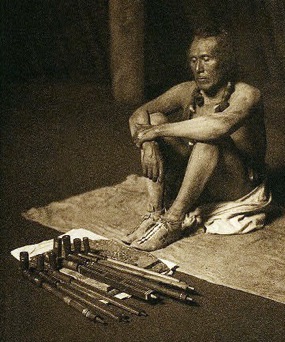
25 persons gathered together in Northern Italy to experience and share an ancient ceremony in the tradition of the North American Indian.
We began gathered around an ancient practice we Ojibwe call “ the morning tobacco fire”. We then shared a discussion of the history, meaning and examples of this type of social experience and compared it to teachings and ideas of other cultures. A detailed slideshow was presented to illustrate the ideas and examples upon which the conversation was established. Following this presentation, we shared a Dreaming Ceremony. In this exercise everyone, in this case, kept open the doors to their rooms. Each slept i a natural way. During the night the ceremonial leader (Turtle Heart) made a series of old tribal songs, sounds and work with an old drum while the people made sleep and entered into dreaming. This exercise is called “Dreaming Rogether”. The next morning the dreamers made designs on a blank of paper set aside for this exercise.
This was followed by the final shared action, an American Indian Mahdosay Dowan, or “sweat lodge” ceremony which carried us all through the exact moment of the solstice of winter, which was just after midnight.
Of course we shared meals together each day in the great kitchen of Pian Castagna, in the legendary and wonderful Italian manner. I treated everyone to a passable, if not great, stew of New Mexico Green Chili, a great traditional food of the Pueblo (Tewa) American Indian culture.
We had everything we needed and offer our sincere gratitde to our host, Adolfo, whose land and fine facility we used for this ceremony. Adolfo holds the land of his family, a mountain-top estate and lands that has been in his family for over 900 years. Adolfo and his partner Cristina have extablished a great facility for group work with comfortable rooms, a well appointed meeting hall and a great kitchen…not to mention the really beautiful ambient of mountains, forest, horses, dogs, cats and great beauty that was all around us. It was a perfect place, closely in harmony with nature and well inside the racious tradition of hospitality, kindness and tolerance which are the tradition of Italian life.
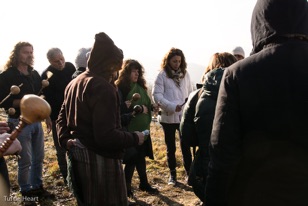
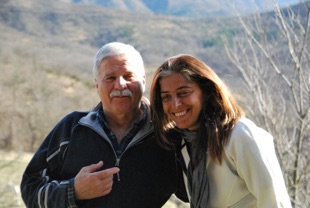
Adolfo and Cristina : Ceremonial Hosts: Fire Keepers
Sacred Morning Tobacco Fire : Beginning To End : One of humanity’s oldest temples :
For most of my life, the small ceremonial fire has been a central practice in my meditations, studies and experience of the sacred nature of the spiritual instructions I have received and experienced, and share, with my American Indian teachers and elders. Fo all of its simplicity, or perhaps precisely because of this simplicity, the little fire is a key instrument in building a ceremonial experience that truly brings a small group of people closely together in a number of interesting ways. The little fire is the first step in any ceremonial experience that I present. This one needed to be birthed, to get started. My host, Adolfo, and I searched the land and chose a particular place on his ancestral land.
The first day, we had present, by good fortune, four women who are in fact keeepers and teachers of this little sacred morning fire teaching. The fourth fire keeper was Cristina. She was our host and organizer for this event. At this ceremony she was offered and accepted responsibility for keeping the morning tobacco fire of these lands. The fire was lighted at First Light on 21 December. It will be kept burning until First Light on 23 December
Sacred Space
To the American Indians, almost every single tribe all across North America historically practiced and maintained some form of these sacred fires. Special keepers, ceremonies and behavior was associated with all of these fires. They have the same status as the Church, Temple, Mosque, Cathedrial and Shrine. Each one is a legal tribal sacred space. Each one is a morally correct tribal space. To the old Indians, these little fires are often called “first ceremony”. One reason for this is that, in my case, I begin all my ceremonial work at this fire and mainatain it until the ceremony is concluded, even for many days. Another, and quite important reason is that the old Indians agree that this one ceremony is for all and every people. Anyone may approach and make the exercise of these fires. You can be a Christian, Muslim, scientist, politician, gangsetr, soldier or who ever you may happen to be…and stand at this fire. It has no ex-communication, penalities or admission requirements. You do not have to convert. You do not have to buy anything or change anything. It is a dignified and simple ceremony.
The way I do it is to have a small bowl of tobaco at the fire. Putting a little tobacco in the fire is almost certainly one of the most ancient of all sacraments. Tobacco started its life with human beings as “food for god”. A little is placed in the fire. A little song, or a small silence, or prayer is made. I have everyone equped with a tribal rattle. We sing together with the rattles before we put in the tobacco. We put in the tobacco. We sing together after the tobacco is put. Stop. Simple. Elegant. It is the first step in the work of weaving together a group of strangers so we can receive the blessing of the solstice from mother earth. A wabeeno like me can use this energy to give medicine to the group. We use this ancient ceremony to help each other, and also as an act of empoerment to each as an individual. I would put these little sacred morning tobacco fires up against any religion or therapy in society and be absolutely confident of its power, ethic and spiritual attainments. It is a great jewel, a gift to share from the old American Indians to the modern people.
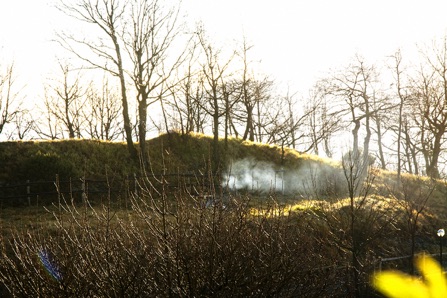
Sacred Morning Tobacco Fire : Wabeeno Form : First Light 21 December 2014
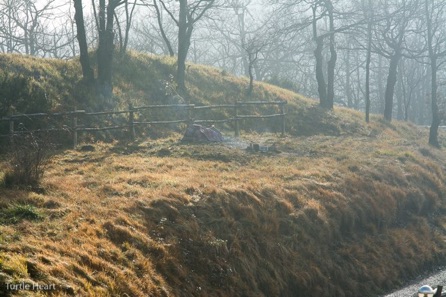
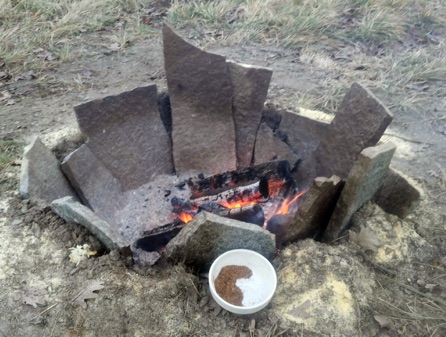
Below : The Morning Fire at night : Morning Fire goes to sleep
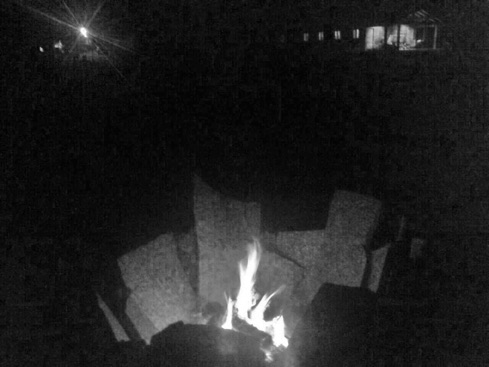
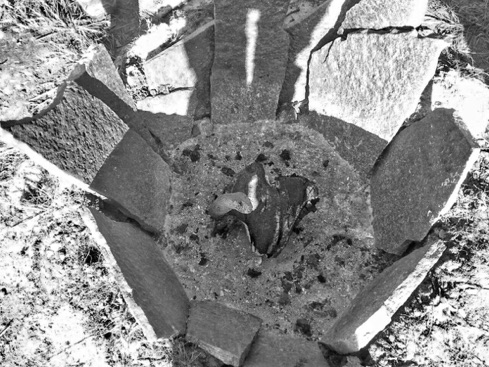
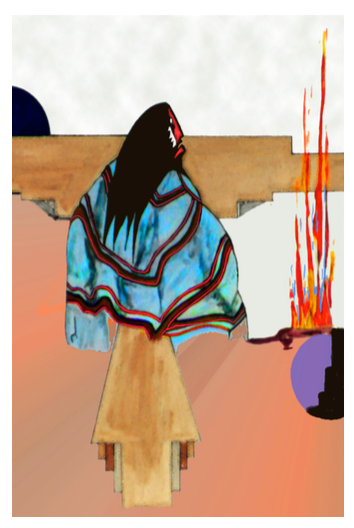
The Sacred Morning Fire: Painting
This is a painting by Turtle Heart around 1981.It depicts something of the feeling or emotion of the little ceremonial fire. Over the years Turtle Heart has participated in thousands of these fires. A fire is kept by Turtle Heart on Pantelleria island in Italy, for ten years as of this writing.
We now have these fires in Taos, New Mexico; San Francisco, New York City, Parabiago Italy, Ferrara Italy, Pantelleria, Italy and now at Pian Castagna. Fires made for ceremony have been made all over the world.
Turtle Heart is working to bring these little fires in a circle around the earth. The goal is 33 fires. The count is presently at 6. We have a long way to go…each step is progress.
You can help us bring these fires around the world. Please feel free to email Turtle Heart with a donation or comments on this work.
Dreaming Together : Ancient Songs, Ideas annd Silence
During the first night, after the fine diner we all shared, we shared a lengthy presentation on the history and ideas of these ceremonies. We prepared everyone for the dreaming ceremonial. In this exercise all the participants work to sleep together closely. In most of these exercises, we have the people in the same room, sleeping in their own blankets but in the same room, close together. We tried a different approach at Pian Castagna, given the logical layout of the working space. The rooms open left and right down a hall-way that opens from the back of the community space. We had everyone stay in their bed, open their room doors. I passed along the hallway through the night with songs and drum and sometimes the very old bells from Tibet I have carried for many years. When I was younger i could sing all night. Now, at 66 years, I find I am unable to do that. So I make a round of songs, then nap, or “doze-off” for a time, wake up and sing again (repeat)…..
This type of exercise directs a deliberate consciousness to the part of our bodies that are dreaming. Bringing consciousness to the act of dreaming is, on its own, a very powerful and effective way to bring more power, memory and understanding (and possible better control) to the dreaming. The old tribal societies practiced the dreaming together for thosands of years. Yet, because of the isolation, privacy and space modern people have in their lives at this time, that powerful and poorly understood experience has been lost. Dreaming itself almost certainly evolved from dreaming together, the thousands of generations in which human beings slept close together in a shared space. This ceremony attempts to recreate that experience and therby hopefully stimulate consciousness and improved relationships with the act of dreaming.
Dreaming is a subject very nearly completely ignored in modern society. A mistake. The old Indians believed that a relationship with dreaming was vital to the spiritual and emotional balance of the entire community. This aspect of society, once so important, has now all but vanished. Dreaming should be discussed in every class in every school, at the very least. The psychoanalyic approach to dreaming is useful, but these people ultimately have no idea about dreaming, not in the sense we describe it here. Not in the sense of the way we work with dreaming in these ceremonies. The entire concept of “dreaming together” no longer exists in society. One could honestly wionder why this is? Perhaps it has vanished because beig well informed and fully empowered with dreaming encourages independance and encourages a type of personality that is not so easily pushed around and maniulated by kings, priests and pay masters? Dreaming is a power you have as an individual, something that also can connect you to your culture and your times. Well-balanced dreaming helps the mind solve problems, process stress and make new discoveries. It is a well established fact that, for example, profoundly lucid dreams gave a man of science the key to atoms, answered complex math problems and fueled innovative inventions. Yet still society so far has done nothing to elevate dreaming. This is one of the important reasons that Turtle Heart includes at least one night of dreaming together in all of his ceremonial group work.
Last year, in a dreaming ceremony, Turtle Heart introduced the exercise of making a drawing when awake after the dream ceremony. These “petroglyphs on paper” are inspired by Turtle Heart’s belief that many petroglyphs on stone, all around the world, are in fact records and archives of important dreaming together ceremonies. In all future dreaming ceremonies we will continue this practice. The lines drawn for this year’sceremony are shown over on the right.
Inside the life of a family, of a community, of a great society, there are many opportunities and exercises/ceremonies/teachings that exist in gentle ways to help us all succeed, heal and make progress. The Corrections Ceremonies, as Turtle Heart calls this group of exercises, are designed to, and extracted from the teachings of the old Indians, to awaken and stimulate these powers, these ideas.
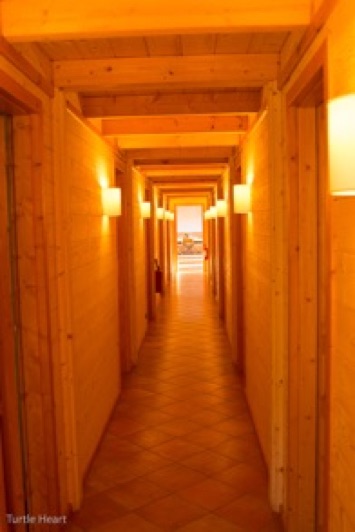
The Mystery Life Dreamers Hall. Winter Solstice ceremony.
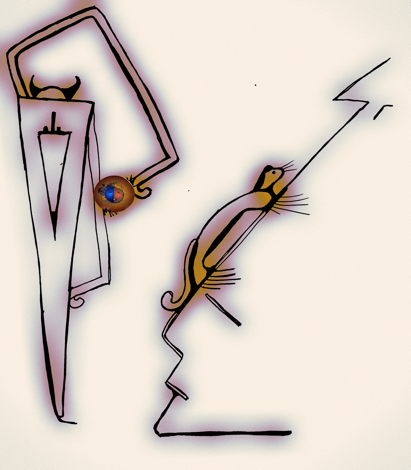
Above : Illustration by Turtle Heart, “Dreaming Together”.
Below: The gathered tools for dreaming.

the Paper Petroglyphs : Ceremony Zero : Winter Solstice 2014
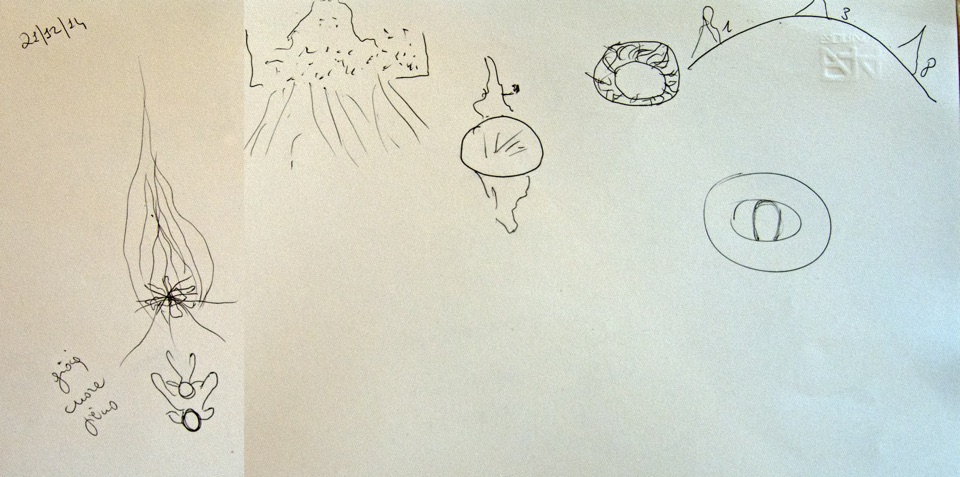
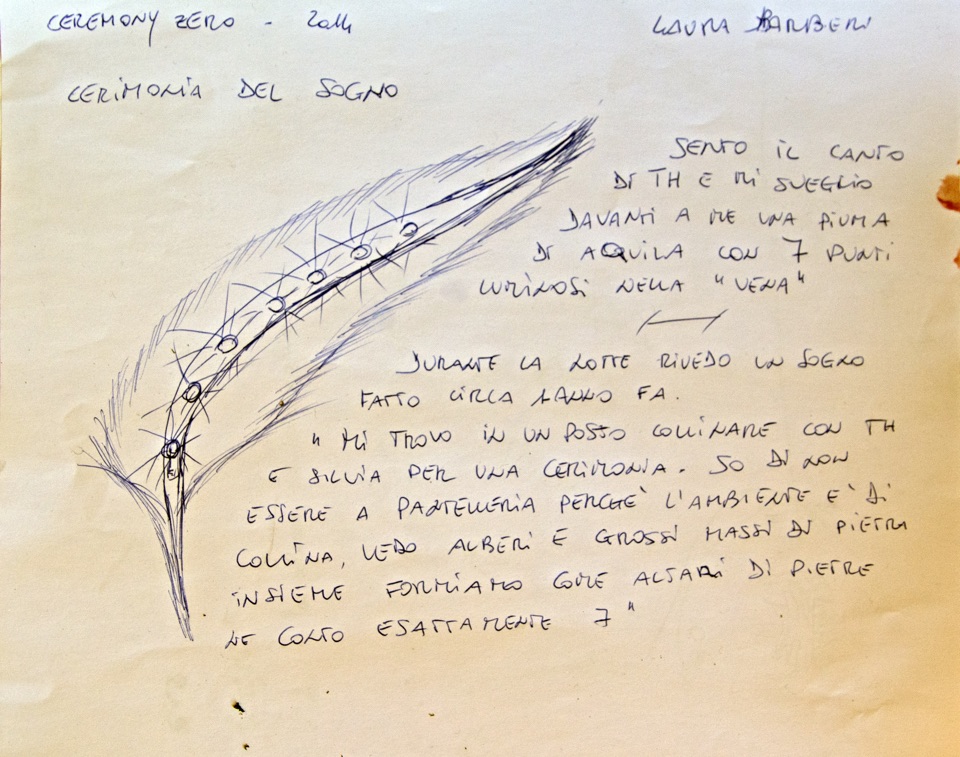
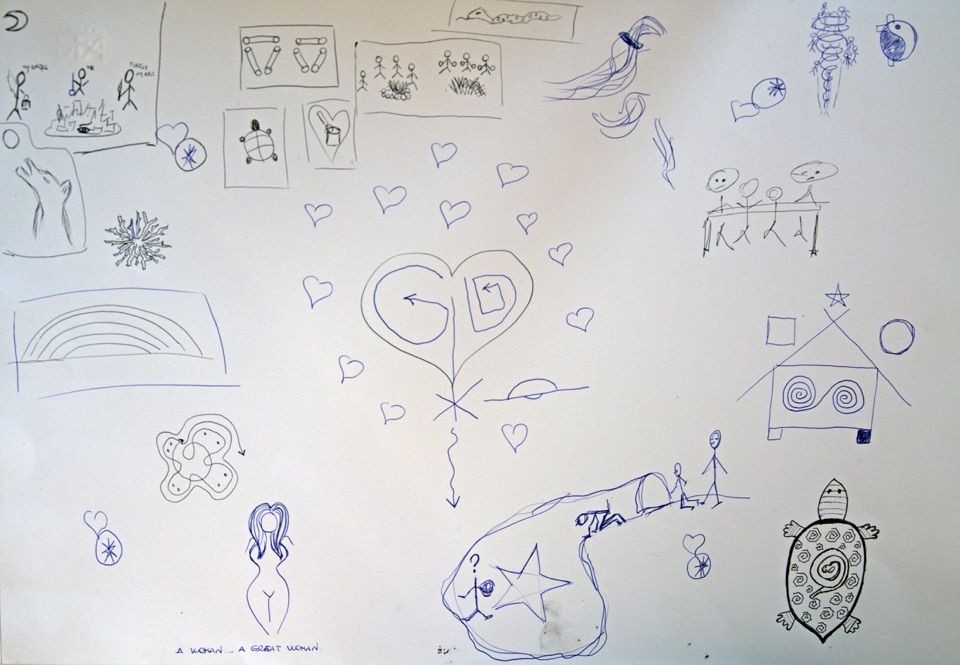
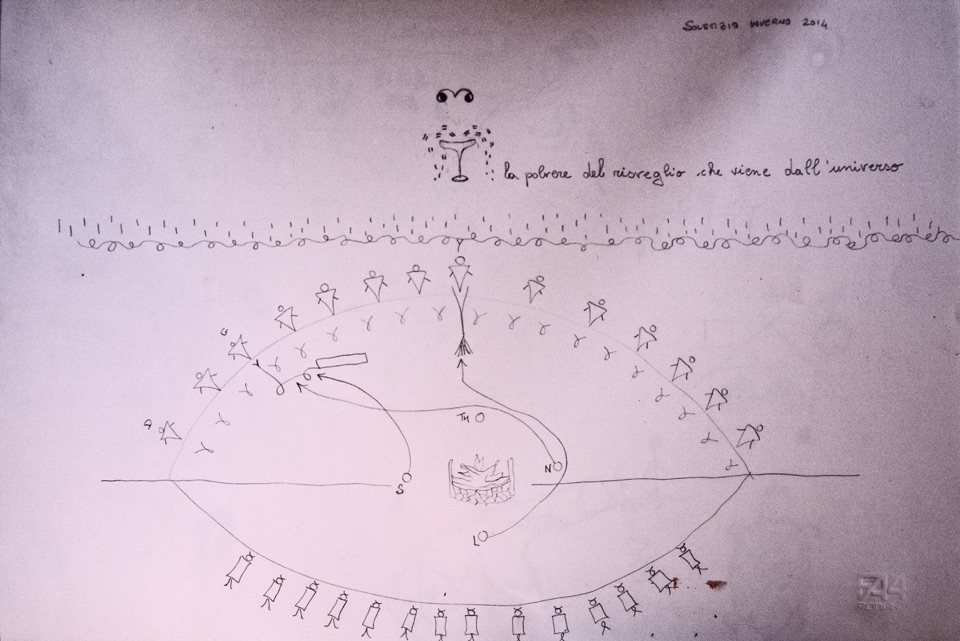
Sweat Lodge Ceremony : Magic Ride through the Gateway : Winter Solstice 2014
The “final” ceremony is a purification: a reboot of the spirit. We built together a large ojibwe style sweat lodge fream. To cover it, the participants each carried to the ceremony several blankets. Once covered, coals from the morning tobacco fire were used to ignite the wood gathered to heat the many stones we would carry inside.
The sweat lodge is perhaps the most well-known but not well understood ceremonies of the American Indian. It has been described in many books and writings. People all over the world try and imitate this ceremony. So it is something that you might find in some form, right or wrong, anywhere in the world.
Turtle Heart has been making this ceremony for over 30 years. He has made it with people from many cultures and backgrounds. Years ago, Turtle Heart was one of the key advisors to the American prison system, when federal law required atht American Indians held in prisons around the country were entitled to this ceremony.
The sweat lodge ceremony and its teachings are a deep and diverse school of knowledge and practices. The central purpose of the ceremony is to empower, cleanse and renew the spirit, the soul and the spirit of a human being. The many different parts of the ceremony…the lodge frame, the fire pit, the hole in the ceter of the lodge, the wood and stones and water are all teachings in themselves. Te old Indians call the sweat lodge, the “womb of mother earth” and it is indeed a ceremony of rebirthing and starting again. This was a large lodge, we had around 24 people inside. Each one carried their rattle inside. There were “four doors”…the door opened and closed four times. Each time new stones were brought inside.
Inside the lodge there were only old songs made with the rattles and silence. It was not a space for talking or discussion or teachings. It was an exercise in gathering with the four elements of the msytery life, breathing together, singing together. We went in some minutes before the exact moment of the Winter Solstice. In ths way we passed through what the old Indians call “Gateway”£ each of us bound in this strong ceremony. When we came out, the Winter had arrived.
Before the ceremony we shared a ceremonial meal, this year made with New Mexico green chili (in a can) and pork meat, potatos, onions, a little tomato. This was a simple ceremonial meal we all ate together and then went inside the lodge.
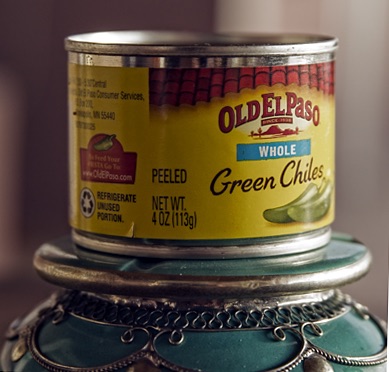
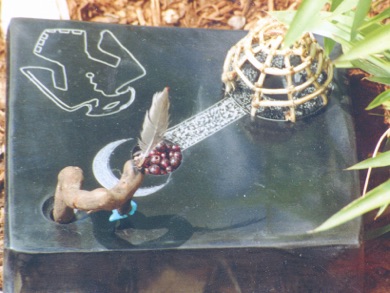
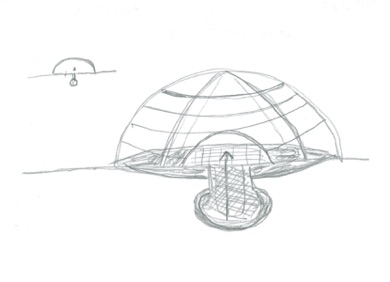
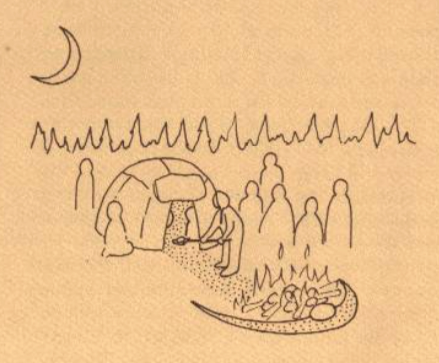
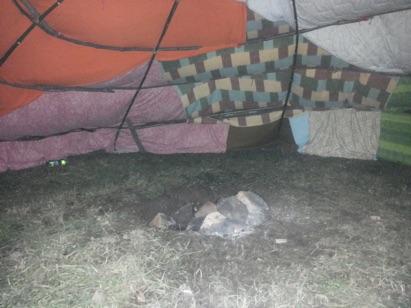
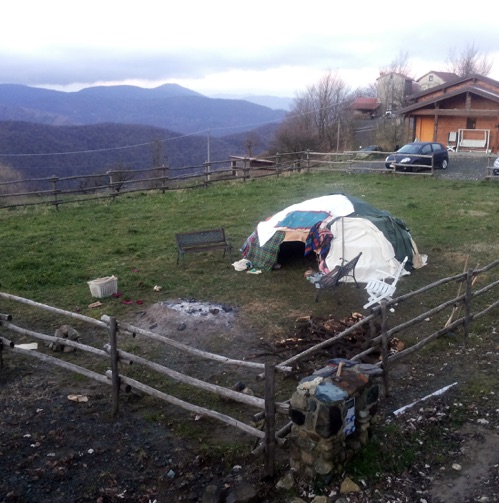
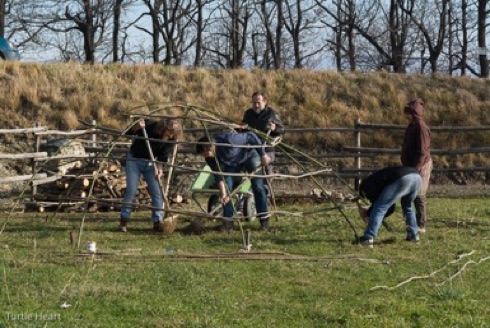
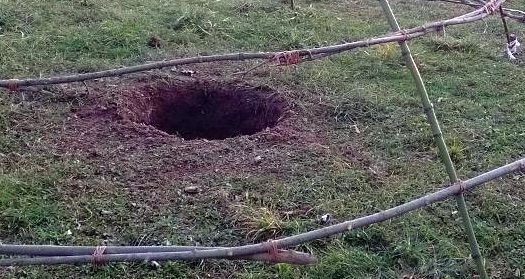
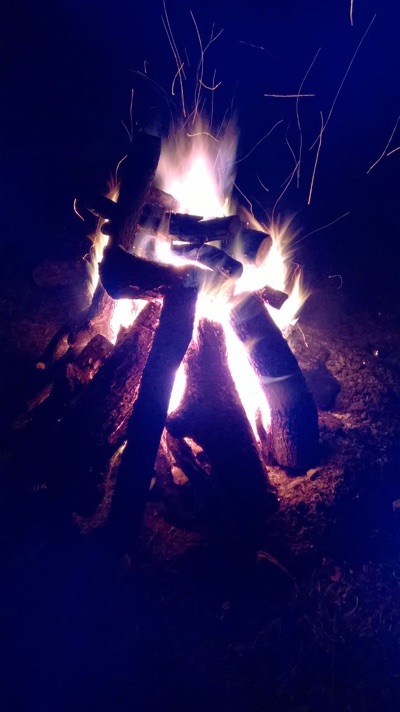
Ambient : Pleasure : Friendships : 21 to 23 december 2014
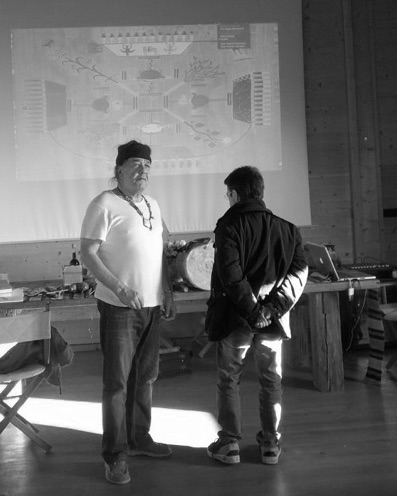
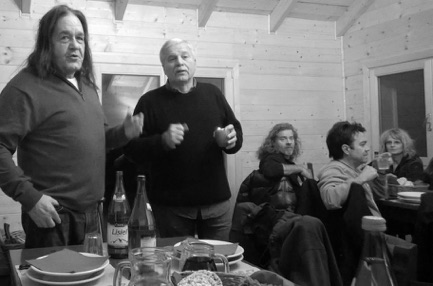
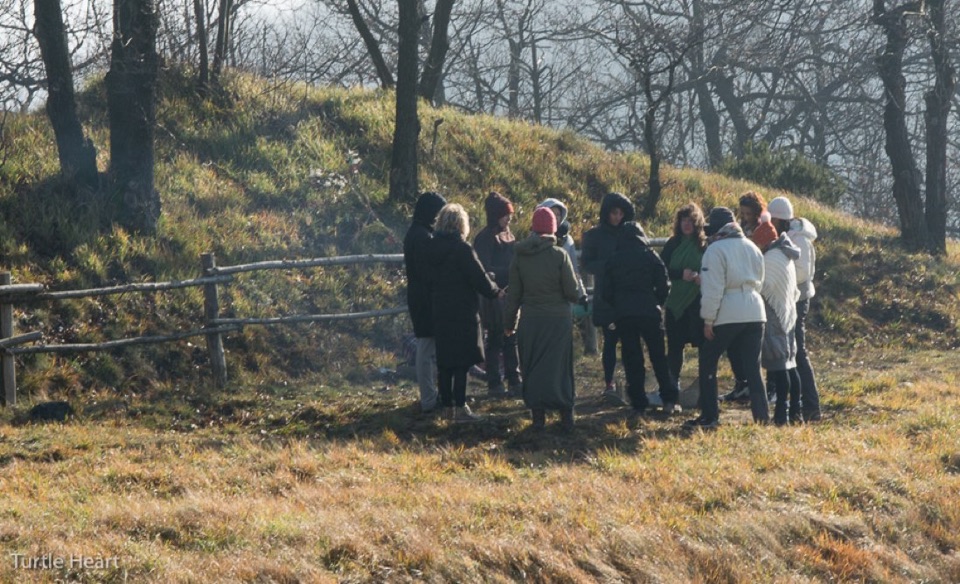
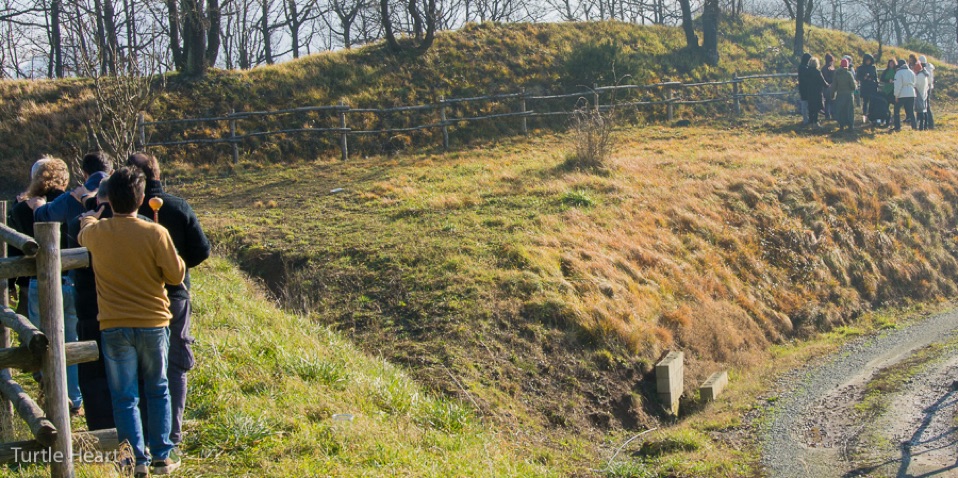
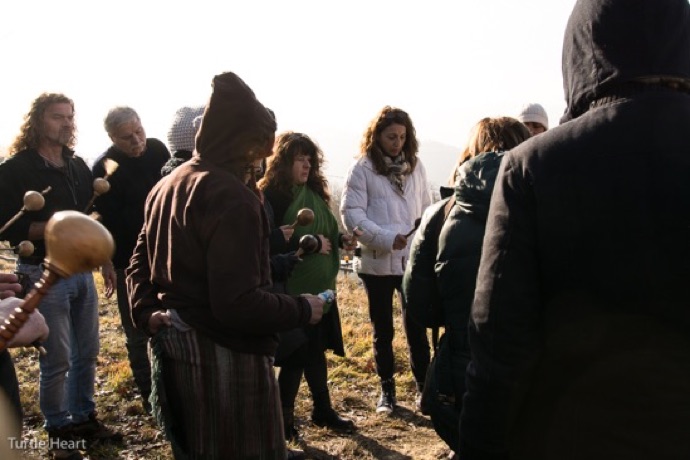
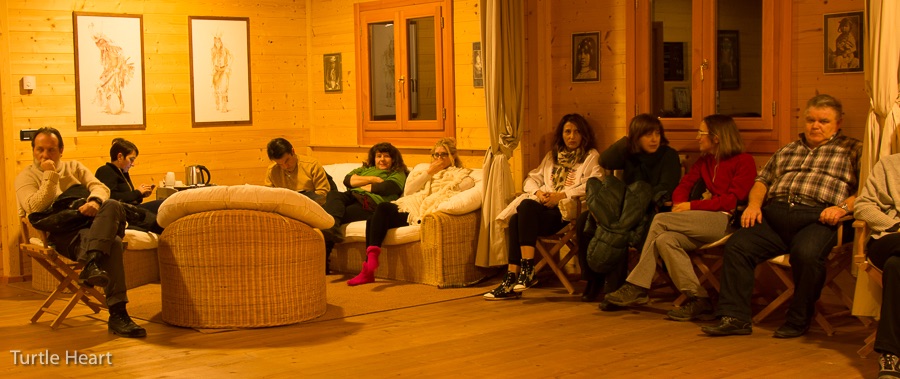
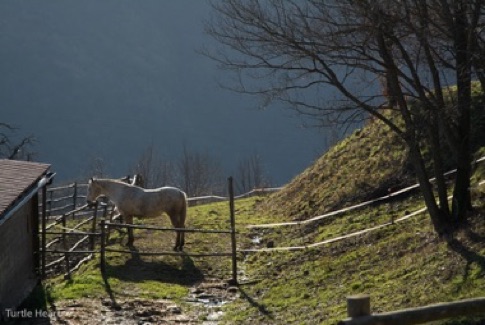

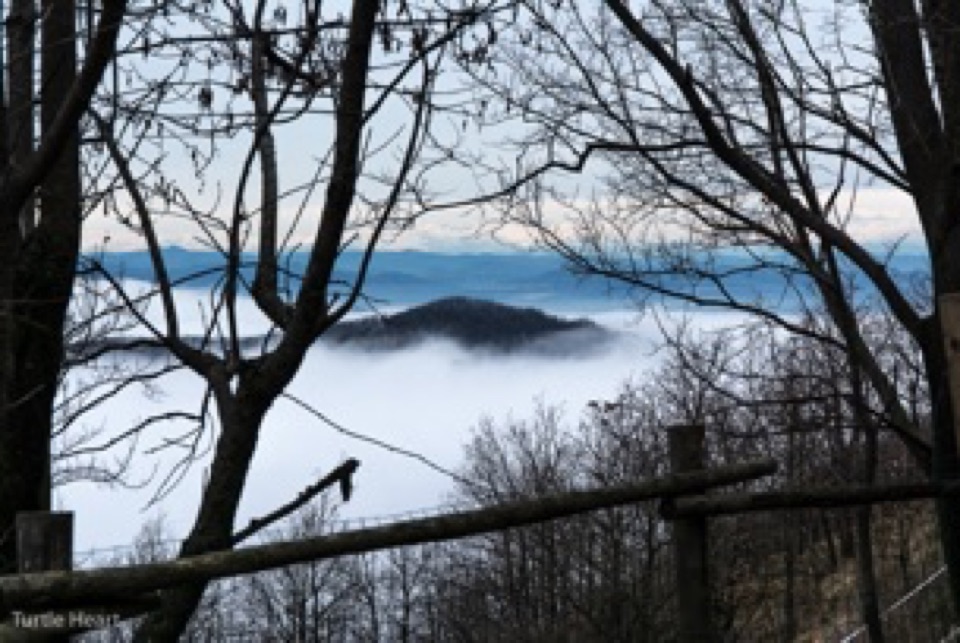
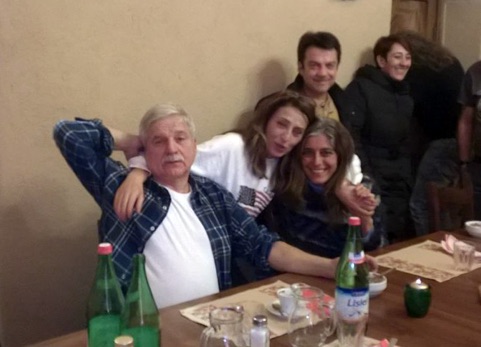
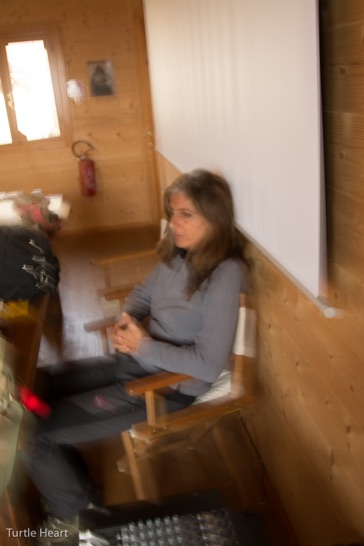
sacredpipe.org : © 2014 : copyright all rights reserved : designed and pblished by Turtle Heart
